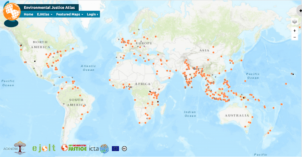
By Mariana Walter and Lucrecia Wagner
Paper in collaboration with the Environmental Justice Atlas.
Original paper at The Extractive Industries and Society journal.
Abstract
This paper explores an intriguing case of environmental mobilisation in the world, Argentina’s anti-mining movement. This movement has contributed to the cancelation or suspension of about half of the contentious projects they have opposed and has led to the approval of regulations and laws restricting large-scale mining activities in 9 out of 23 national provinces. This process of mobilisation and institutional change is quite unique when compared to other Latin American and worldwide environmental mobilisation processes. This paper studies how the actors and the strategies mobilised in Argentinean mining conflicts have led to these and other mobilisation outcomes. With this aim we have developed, in collaboration with the Environmental Justice Atlas (www.ejaltas.org), a systematic identification and analysis of all public large-scale mining conflicts in the country from 1997 (when large scale mining began) to 2018. We conclude signalling three key interrelated features of anti-mining contention in Argentina: the diversity of actors and their strategies, some political opportunity structures (i.e. decentralised mining governance to provinces, mobilisation at early stages of projects) and the role of multi-scalar environmental justice networks acting on local, provincial and national scales.
Highlights
- We analyse 38 large-scale mining conflicts in Argentina with the Environmental Justice Atlas.
- Mobilisation stopped half of contested projects and led to laws restricting mining.
- We highlight the diversity of actors, strategies and multi-scalar networks of collaboration.
- Key Political Opportunity Structures: decentralization and early mobilization.
- We signal the transformations led by the EJ Movements beyond mining contention.
Find the full paper here: https://doi.org/10.1016/j.exis.2021.100940

The project ENVJUSTICE has received funding from the European Research Council (ERC) under the European Union’s Horizon 2020 research and innovation programme (grant agreement No. 695446)